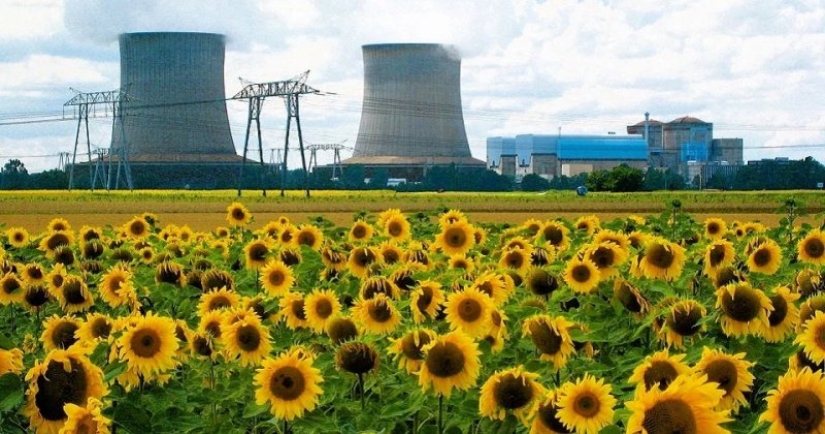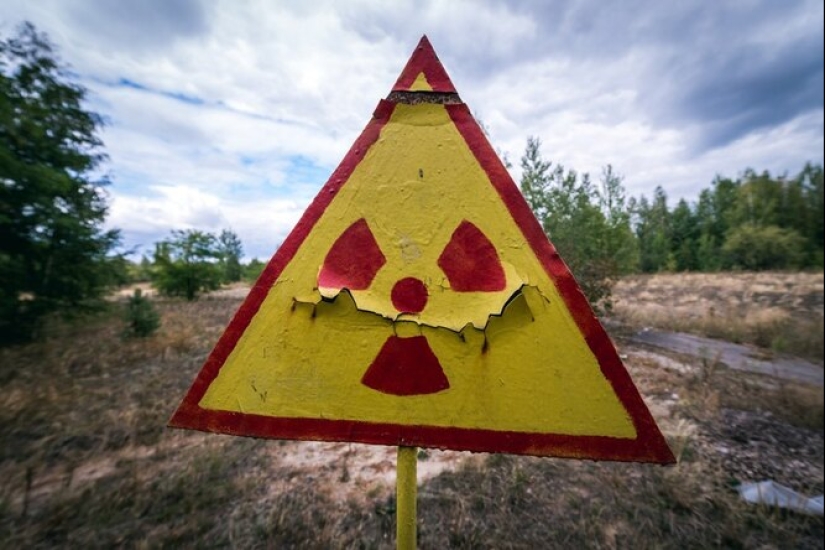Why are sunflowers planted in places of nuclear disasters
Categories: Catastrophes | Ecology | Science
By Pictolic https://pictolic.com/article/why-are-sunflowers-planted-in-places-of-nuclear-disasters.htmlThe disaster that occurred at the Chernobyl nuclear power plant in 1986 shocked the whole world. Its consequences affected the whole of Europe, so it is not surprising that the best specialists of the planet were attracted to combat radioactive contamination. It is impossible to list all measures to reduce radiation. They began as soon as the fire at the station was eliminated, and continue to this day. Among them there are very unusual ones, for example, the planting of sunflowers.

8 years after the accident, in 1994, scientists from the USA arrived in the Chernobyl exclusion zone. These were Phytotech specialists, and they brought sunflower seeds with them. Just a kilometer from the destroyed reactor of the nuclear power plant, the Americans arranged a small vegetable garden with an area of only 75 square meters and planted plants on it.
They landed, installed signs that an experiment was underway, and left. But not for long — when the sunflowers rose and got a little stronger, they returned and took samples of plants and soil. They came several times, as the sunflowers grew. After a while, representatives of science published stunning news. The well-known culture turned out to be an irreconcilable fighter against radiation.

Sunflower roots absorbed radioactive metal caesium from the soil, and stems and leaves — no less dangerous strontium. In just 10 days, the plants at the experimental site removed 95 percent of radionuclides from the soil. After that, they had to be disposed of as hazardous waste, as sunflowers became incredibly radioactive.
Two years later, the experiment was repeated. Only they have already planted not a plot, but a whole field of sunflower. Everything happened again — the earth was cleared. As a result of experiments, scientists found out that plants of this species significantly reduce the concentration of radioactive isotopes of caesium and strontium in the soil in just a few weeks. At the same time, oddly enough, having received a colossal dose of radiation, the sunflowers felt great, bloomed and even brought a deadly harvest. Why is this happening?
The answer to the question is worth looking for in an era remote from us hundreds of millions of years ago. When life first began on Earth, the level of natural radiation was much higher. Plants had to adapt to this and learn to survive even in such conditions. Some representatives of the flora gradually lost this ability, and some retained it. Sunflower in the course of evolution has developed a complex and extremely powerful system of absorption of radioactive substances. It is still working now.

For this feature, biologists have classified sunflowers as hyperaccumulative plants. They were recommended to plant them where there is radiation and chemical contamination. But there is one more question — why do sunflowers need dangerous metals contained in the soil? It turns out that the plant absorbs them... by mistake. It confuses heavy metals with others that are vital to it.
For example, caesium is perceived as potassium, without which photosynthesis is impossible. Strontium mimics calcium, which is necessary for development. Sunflowers infected with radiation are removed from the soil along with the root. They are taken to radioactive waste processing plants with all precautions. There, plants are destroyed by pyrolysis at a huge temperature. Sunflowers turn into a substance similar to glass and it is buried in landfills for waste.
Recent articles

At first glance, these colorful works look like ordinary paintings - but upon closer inspection, it turns out that they are made... ...

I want to somehow distract myself from the news about the pandemic and plunge into the beautiful. Here, for example, is a story ...

Serbian surrealist artist Dragan Ilić creates astonishing and provocative paintings that blend symbolism with eroticism, and ...